GIVE ME SOMETHING TO STOP THE BLEEDING
In an attempt to contain my excitement for The Jesus Lizard playing live on UK shores in less than a fortnight, I’ve decided to focus an article on their discography. At least - the 12” catalogue that I own. It doesn’t include The Jesus Lizard EP from 1998, or the live albums and comps.
Between disbanding in 1999 and reforming briefly in 2010, their star seemed to inexplicably and stratospherically rise. Perhaps the world finally caught up with their abrasive, perfectly crafted discordant melodies in the meantime, but when they were first a going concern, they didn’t attain the same levels of adulation as they do now.
I’m not complaining - they’ve always been a favourite of mine and any commercial success, no matter how late in the day, is richly deserved. That their new found popularity is enough to instigate tours and new releases is great news - I just wonder what happened in those ten years for the penny to drop, to such an extent, with so many people?
They’re now THE iconic “Noise Rock” band. They’ve attained such heights of respect, that to utter anything other than sphincter-cleansing plaudits results in a death of a thousand online burns.
Not that there is anything negative to say about the band, but you take my point.
Absence made the genre’s heart grow fonder, I guess.
You never know what you’ve got ‘til it’s gone.
The Jesus Lizard were always A-Listers, but I suppose the competition was more abundant back then. It was harder for a band to really stand out from the sheer volume of so many other distractions, regardless of how obviously ace Yow, Denison, Sims and McNeilly were/are.
For instance, in 1993, which you could argue was the height of The Jesus Lizard’s “fame”, post-UK-top-10 with the Nirvana split single and after Liar, Goat and Head, they were playing at the 600 capacity Highbury Garage in London.
It’s where and when I interviewed Mr Yow, on the green outside the venue.
There was a one-off Astoria show, three months later, that was larger - potentially 1600 people - but - get this - in 2025 - THIRTY TWO YEARS SINCE - the band are returning to play a long sold-out show at Camden’s Electric Ballroom, that holds 1500 punters.
Just as many are disappointed they didn’t get tickets. They could have sold out two nights with ease.
THIRTY TWO YEARS LATER.
WTAF?
It’s not as if they’ve been releasing an album a year since 1993. They’ve been quiet as little mousies, release-wise, for a good quarter-century, until earlier this year.
Fuck knows. I don’t care. They’re back. They’re old. They’re fearsome.
Yow looks like an old drunk hobo.
I hope we get to see his geriatric genitals on January 11th.
PURE
Touch and Go, 1989
There’s something joyously primitive about the clatter of the drum machine and cavernous space between what sound like single track instruments on Pure.
It’s gnarly, nasty, noisy and grotesque.
It sounds as stark as the David Wm Sims-designed artwork.
Pure is the only Jesus Lizard record not to feature a drummer, and it’s an outlier because of it. It’s a really interesting document that shows a band in the raw - warts and all.
Interestingly, it doesn’t sound like an Albini recording, particularly. It lacks the precision and space normally associated with his work, although it is definitely credited to him. Yow’s vocals overpower the mix in places, the drum sounds are of a specific time in music history and there’s precious little bass in David Wm Sims’ erm… bass. It’s all distorted clang and clatter. Duane Denison’s guitars are more sparse than they would become - often more scrapes and squeals than chugs and spangles.
None of this is a bad thing.
Pure stands up today as sounding remarkably contemporary; just as filthy and awkward and even more sinister than it did upon its original release.
It’s also unique in The Jesus Lizard cannon for having David Wm Sims take on lead vocals for opening track, Blockbuster. Yow would finally do the honours when Melvins covered the song in 2000, on their LP The Crybaby.
There are only five songs on Pure. Blockbuster is followed by Bloody Mary, which introduces the dynamics the band will become known for. Denison’s guitars are a thing of beauty and stand out, alongside the interesting Alesis HR-16 drum patterns.
Duane recalls how Pure was recorded:
“Our first rehearsals took place in a recently vacated house (more like a shack, really) in East Austin. For some reason, the doors had been left unlocked and the electricity left on.
We took advantage of this and the results of these furtive sessions became the EP Pure, which yielded two songs, “Blockbuster” and “Bloody Mary,” that became staples of our live set for years to come.”
Rabid Pigs is next - and its robotic, semi-industrial drum sound really dominates proceedings. Lots of double bass rolling. The guitars take a back seat to Yow’s squawking - to the point he almost feels unaccompanied by anything other than the HR-16.
And this foreshadows the descent into the weird.
Side Two is given over to Starlet - a distorted spiral of stalking darkness - and the amazingly titled Happy Bunny Goes Fluff-Fluff Along. Never has a song title felt less appropriate to the sound it makes. It’s a hissing, nasty instrumental, marked with industrial noises and repetitious patterns.
It somehow has the air of a grim French Connection-style noir soundtrack, as imagined by an inmate of Arkham.
It’s a great way to draw a timeless debut to a close.
I’m disappointed they didn’t create an entire LP at this stage of their career.
Pure’s a different beast to what would follow - and a really unique opening salvo.
HEAD
Touch and Go, 1990
Head crashes in, immediately sounding more like the Jesus Lizard we know and love.
The acoustic drums of Mac McNeilly elevate the band from lo-fi to hi-fi - and suddenly it’s all there, from everyone, in abundance.
Less sparse now, Duane Denison’s playing jumps between intricate riff and spiky chords before landing firmly on the central ear-wom guitar line that gives One Evening its nagging addictiveness. Sims’ bass is unflappable and grounded behind Yow, who suddenly feels like he’s become the front-man he always dreamed of.
The difference between Head and Pure is huge in terms of how full and fully formed the band sounds. I really love Pure, but Head is a different kettle of fish altogether - acoustically and structurally. There’s more confidence in the playing, more dynamism in the writing and more dominance from Yow. Albini’s engineering is next level, too, with the familiar space between the blocked densities of the different instruments making the band sound huge, raw and clear.
Everything comes together for Head - from the creeping escalation of 7vs.8 to the lull of the next track, Pastoral - the closest they come to a ballad until Zachariah on Liar - with its winding, delicate guitars and whispered vocals.
Waxeater is elemental Jesus Lizard - complete with ranting vocals, urgent riffing and that rolling, steady bass.
All of this against McNeilly’s (truly genius) drumming. That they managed to find someone so accomplished, in tune with their thinking, and, amazingly, capable of pushing them even further compositionally, is astonishing. He brings all members together and elevates the entire band; an organic springboard of intent.
Instrumental highlight Tight and Shiny brings a smile, as does the jaunty If You Had Lips, whose title never fails to tickle me.
Perhaps the reason Tight and Shiny amuses me so much is because of this quote from Page Hamilton of Helmet, recalling the first time he saw The Jesus Lizard play, in New York:
“ It was an amazing show, but the image that is still stuck in my brain is one of Yow standing on a milk crate so we’d have a good view of his nutsack, which he had pulled out, squeezed tight and held up to the mic while he smoked a cigarette.
As he later said, “They were singing.”
The song was “Tight and Shiny,” an instrumental.”
Page Hamilton.
Head sets the bar of expectation for forthcoming releases, and it’s a high one.
There’s no duff track amongst the ten.
It begins a run of at least three flawless LPs - some, including me, would suggest much more than that - but popularly, Head and the next two LPs are considered to be as close to perfect as a band so intentionally despicable, sinister and grubby could become.
The artwork, on the other hand, is uninspired rubbish, and doesn’t suggest the magnificence of the joys it envelops. Child-like charcoals of two naked people, too remedial to be significant. The graphics over the top are great, though.
Still - an immaculate example of 5-A-Side perfection.
GOAT
Touch and Go, 1991
There is something inarguable and incontestable about Goat.
Hailed in most quarters as their masterpiece, for me, it’s a close run thing that is interchangeable with, Liar depending on my mood.
Goat is justifiably on a pedestal by 99% of fans of the band, and it’s easy to understand why. It straddles the ground perfectly between noise and off-kilter melodies. It plants one foot squarely in sinister, brooding, threatening violence and the other in hilarious story-telling. It is awkward and accessible.
In every quarter, it’s an album of opposites and contradictions, which perfectly encapsulates the band.
Every one of the songs, importantly, works brilliantly live - to the point where you could walk away from a gig disappointed that any tune had been skipped in favour of another.
Undeniable highlights are Then Comes Dudley, the iconic Mouthbreather, Monkey Trick and the grim swing of Karpis - but really - the very fact that half the album is being pulled out as more notable than the rest feels finicky, at best.
It’s a nonsense.
Whether its the sliding, revolting blues of Nub, or the awkward swaying of the following track Seasick, every song has its own identity that contributes necessarily to the whole piece of music - because Goat is exactly that - one piece - unified, coherent, detached and incoherent - opposites again, but, like a house of cards, as hackneyed as that metaphor feels, interdependent - if one song was removed or replaced by another, the album would lose it’s Samson-esque power.
When interviewed for Treble Magazine about the success of Goat, Yow says:
“Maybe the songs are more immediately accessible, or easier to get a hold on than the stuff on Head, and it sounds better than Down.”
He pauses.
“‘Monkey Trick’ is on Goat right?” Yow asks. “I think ‘Monkey Trick’ is our best song. It’s representative of what we do. It’s kind of an epic. Got a lot of cool parts and it’s well arranged.”
Read the whole piece here: Treblezine Jesus Lizard Article
As the comparatively vast album closer, Rodeo In Juliet, leaves the odd pop and crackle in its otherwise silent wake, you’re left feeling sated.
A perfect meal of barbarous, intricate, beautiful and horrific songwriting that consistently hits the mark, right the way across the album’s concise half-hour run time.
The artwork is back on form with Goat. David Wm. Sims returning to boobs; this time with indiscernible macro photos of nails superimposed over the top of the model, coloured to look like flames.
A sleeve as iconic as the music it contains.
LIAR
Touch and Go, 1992
Liar was Touch and Go’s 100th release, at least, according to the catalogue numbers.
It’s a milestone for the label, and the quality of the album makes it a milestone for the band, too. Assisted no end, a year after its release, by having Puss, one of its key tracks, chosen as the B-Side, of the split single with Nirvana’s Oh, The Guilt.
The success of that 45 took The Jesus Lizard into the uppermost reaches of the UK pop charts; something which seems just as incredible, bizarre and vindicating thirty two years later as it did at the time.
Even now, Puss, opener Boilermaker, Gladiator and the Art of Self Defense - what an opening salvo - are stone cold classics - not just of the band or the genre but, I would argue, of Underground Rock in general.
The album marks a step away from Sims’ artwork, and starts a brief run of entirely odd, po-faced anthropomorphic classical- style paintings, established by Martin Bucknall, and a style that remains synonymous with the band.
Even comeback LP Rack, from last year, retains that illustrative identity.
Yow has been quoted as suggesting Liar and Goat could have been a double LP; many of the songs written around the same time.
But for me, Liar has an identity very much of its own, removed from Goat.
It’s an engaging evolution. A little less space, a smidgen more pace and fury.
It doesn’t sound quite as hollow as Goat. It also feels like a the concept of a recognisable chorus became a tangible goal to achieve in most of the songs.
The band are another step further away from any Birthday Party comparisons too - with less of a lumbering blues feeling and more of an acidic punk influence coming through in the writing.
There’s an excitement to Liar that seems to fizz through every note.
As I listen through now, it still really resonates as an immaculate collection of songs. Following on from Art of Self Defense, the pace drops somewhat and Duane’s awkwardly timed, circular riffage hypnotises throughout Slave Ship - and, like Seasick from Goat, that rolling, tidal rhythm repeats and, in turn, lulls and nauseates all the way through.
One of the most amazing things about Liar is that the band saw fit to sequence Puss, their most anthemic song to date, as Side One’s closer! It’s testament to the power of the writing that they didn’t feel the need to open Side Two with an obvious banger, instead secreting it in the most obscure place on the LP.
Put the record on now. Listen to Yow squall: “Give me something to stop the bleeding…” and just try not to lurch around your living room, just as middle-aged as he, and just as lost in the moment - and prepare to drop your trousers to Mac’s iconic fill in the middle of the song.
The world needs more old guys dancing in their under-roos. I tells yer.
Puss has lost nothing in the intervening years.
And just think - that’s only Side One!
Incredible.
Side Two doesn’t disappoint. We embark with the lurching Whirl. Subdued. Creepy. Amusingly, the only traceable lyrics that I could find online for the song are “Get undressed. I wanted to.” And yet they are far from the only words Yow sings. They’re just the only ones you can decipher.
Straight from that mid-paced roller comes the hectic and kinetic Rope, the passage of which is so sprightly you fear the intricacies of the musicianship could be lost, but of course, they’re not.
If there’s a weak link on Liar, it’s Rope - but I’d also argue that a weak link on Liar is a high point for anyone else. I only mark it down because the similarity of its vocal rhythm to The Sweet’s Ballroom Blitz distracts me.
“Take off your shoes if you’re going to dance on me…”.
We’re back to the hip-swaying - or, more likely, clicking, these days - pace of the late highlight, Perk. It’s short. It’s psychologically concerning.
But we barely have time to register that before the - shock! - beautiful - Zachariah slides in and takes us away on an entirely different musical adventure.
I might, some days, hail this as my favourite track on the entire LP.
If only because you can’t help but yowl along with Yow: “Like Moses - the people like the Red Sea!”
Before a burst of awkward, tumbling and spacious breaking - and back again to the sliding glory.
I love it. More than a ballad - it’s a veritable timeless canticle.
Play it at my funeral.
DOWN
Touch and Go, 1994
Let’s start with the artwork. Another masterpiece from Martin Bucknell. This time a dog falls inexplicably through the sky, conjuring feelings curiosity, horror and alarm together. It might be their best cover art.
Down would be the last time they recorded with Albini. After this LP, the band would sign to Capitol and have a different approach to recording.
For that reason alone, there’s an end-of-era feeling to the album, at least retrospectively. At the time, it felt like an evolution of similar themes - perhaps less dynamic and not as powerful as its preceding Holy Trinity, but still compelling, engaging, exciting and satisfying.
From Down onwards, the band was on a commercial descent (pun intended) - but again, playing the albums now, back to back, it’s hard to see why.
Perhaps it’s just the shadows cast by Goat and Liar were so long they obscured anything that came along afterwards, but all three of the remaining original run of albums hold their own in 2025. I would even say that the majority of their genre’s output in the intervening years pales into insignificance next to them.
A first for the band, Down breaks the ten song limit for an LP and delivers thirteen new ditties for us to digest.
We launch with Fly On The Wall and - so sue me - it rivals any other album opener the band have presented to us thus far:
“That damned fly I told you about is keeping me up again,
I’m tired as shit every day at my job because his buzzing keeps me from dreaming,
And I can never get any rest.”
Yow has an uncanny knack for making everyday mundanity hallucinogenic, disturbing and, well - horrifying.
Perhaps Mistletoe and Countless Backs of Sad Losers are a little less memorable than others, despite the latter’s fantastic name. Queen For A Day has an urgency to it that those two songs lack - but Yow’s correct when he suggests that Down wasn’t recorded as well as the other LPs - it’s noticeably more muddy and flat sounding, which probably has a slightly detrimental affect on the songs themselves.
The band’s palette is broadening on Down, but weirdly, the swampy rockabilly stomp of The Associate recalls their Birthday Party influence more than anything else they’ve done. That is, until the entire song is elevated by the “There is a motive for every movement…” chorus, which ends up being a jaunty Side One highlight and a Jesus Lizard classic.
The vocal delivery has a bit of Big Black about it, to my ears, too.
“The best place for you is the hell out of my sight”.
Indeed.
Side One comes to a close with the amusingly titled “Destroy Before Reading” - but unlike Liar’s triumphant Side One closer, there’s nothing particularly distinguished about it. Competent and of course, a joy - but that bar has been set so high that OK feels disappointing.
Side sidles mysteriously from the starting blocks with Low Rider, a near-instrumental that is one of the longer tracks on the LP that I’m surprised hasn’t been commissioned more for background movie music. Its prowling intent has that same noir-ish feel we heard on Pure’s Happy Bunny.
The despicably hysterical 50c delivers an open loathing of the listener rarely seen these days and for that reason alone it’s a standout track from Side Two. The loud/quiet dynamics of American BB follow - but again - as competent as the song is - and I stress - by anyone else’s standards, it’s brilliant - it falls short of expectation. The riff’s are good, the awkwardness is there, but something’s not quite biting when you really listen hard to it.
Sims grapples with his organ on Horse, and it elevates the song entirely. One of the strongest tracks on the LP, it’s a shame a bit more of that experimentation isn’t present elsewhere. It’s even got the tone of Red Right Hand to it, which lends the song some much needed weight.
The final run of songs feel more like a return to form. Din has all the qualities we’ve come to expect from the band; a fucking racket, a claustrophobic tale and chops and changes for everyone playing anything. Especially Duane. It’s captivatingly awkward. Elegy is Down’s Zachariah; slow, gently picked - almost clean vocals and perhaps the most evil lyrics of the entire album:
Just when you’re about to learn to smile again,
I’m going to be the one to teach you how to cry.”
How good is that couplet?
The album draws to a close with the barnstorming The Best Parts, which, cynically, it kind of is. It’s a love song - but not by Yow. It’s a great song to end on.
Down is more subdued than the albums that have come before it. It IS flatter in terms of its recording and compositionally, there are less surprises. It’s a grower, but even once its reached its full height, it falls behind the previous LPs a bit.
SHOT
Capitol, 1996.
It’s all too easy to dismiss Shot on the basis that it’s not an Albini production. And perish the thought that anyone else dealing with such an Albini-centric band as The Jesus Lizard could make their own mark on their sound.
I get it. I love and respect Albini’s work as much as you do, but GGGarth and Jeff Lane did a really good job on Shot. It sounds fresh and revitalised, compared to Down. Yow’s vocals are higher in the mix. Clearer and cleaner. Sim’s bass less growling and (even) more precise. Mac’s drums and Duane’s guitars aren’t as in your face, which admittedly, is a shame, but here the focus is more on Yow.
It’s a different approach and it works, albeit in an entirely different way.
It’s a long way from sounding either commercial or like a typical major label mix, as it’s often been accused of. Incidentally - the best available YouTube stream doesn’t approach the clarity and power of putting a record on, so don’t rely on that to form your own opinions.
Get hold of the vinyl, if you can.
Presumably because of Capitol Records, trying to find a free stream of the entire LP to include in this article is a pain in the ass.
The LP opens in fine fettle with Thumper, and immediately we’re in familiar territory. There’s a breathless urgency to its central riff and jazzy breakdowns that makes that tired old heart of yours skip a beat. There’s life in the old dog yet and it’s with a sense of relief and anticipation that the roll of Shot starts with.
I remember first hearing second track Blue Shot upon release and it’s still an ear-worm that randomly affects me, to this day. The chorus is great, although the lyrics I nonchalantly yodel are about as far away from the actual words as it’s possible to be. Honestly- what goes on in that fetid little mind of his?
“Lies
Placidyls
Why don’t you set up a camera to record your own death, dear?
Lies
Placidyls
A heroin OD or a heroic vulva?”
Placidyls are Quaalude-like sedatives that have been replaced by safer drugs these days in most countries. They were quite dangerous, especially when mixed with alcohol.
I do the googling so you don’t have to.
And then the immense Thumbscrews - vintage Lizard in every way - but punchier - more combative and with some glorious guitar effects that break the fury into a hundred little exotic lounge-lizard pieces. Good Riddance is next, followed by the terrifying Mailman, which might be the track of the LP, at least lyrically, with its hideous paedophilic case study.
“He wants to know if he can run his fingers through my hair
Also wants to know if he can hop around my hole…”
I wonder how the song would be received by a major label artist these days.
Regardless, it’s an incredible song, and the quality isn’t held back by the perfectly titled Skull Of A German that follows it.
The final track of Side One, Trephination, is structured around a phone call between Yow and a confidante, with Yow reaching the end of his tether, mentally and his confidante reassuringly being prepared to drill a hole in Yow’s skull to relieve his desperation.
It’s quite genuinely full of anguish, which is exemplified with his clean singing for the chorus, situated against the delicately melodic picking of Duane’s guitar.
When Side Two begins with More Beautiful Than Barbie, you’re reminded how Shot is absolutely loaded with bangers - it’s easy to forget the quality of the songwriting amidst the production critiques and the horrible sleeve art. It’s a contender for top three.
The journey continues powerfully throughout Side Two. Each player distinguishing themselves in new and interesting ways, whether it’s in the subdued playing of Too Bad About The Fire or the schitzoid riffing of Churl, which recalls the high points of Liar. And oh my God; Now Then rocks and roils unlike anything else they’ve released to this point - it’s even got a bastardised AC/DC riff for its main component. And a guitar solo!!!
Now then - that would have been a great pairing live…
Inamorata and Pervertedly Slow bring the album to a close with a sinister strength that stays with you long after the needle has been lifted and rehoused in its clasp.
Shot is absolute quality, start to end, and needs to be re-evaluated by all those that suggest otherwise. It contains some of the band’s best songwriting, enhanced by a recording style that looks at what they’re doing through a different lens.
It was time to take that drastic action and it paid off, at least in terms of this evaluation, thirty years later.
Shot is a great record.
BLUE
Capitol, 1998.
Blue is something of an anomaly in the discography, mainly because of the late Andy Gill’s production work (RIP). He lends a semi-industrial feeling to the instrumentation and it’s hard to pinpoint exactly why. There’s more space on Blue than there was on Shot - and we’re back to Yow being harsher and more distorted, but still up in the higher echelons of the mix.
It might be the robotic sound of James Kimball’s drumming. He’s certainly gifted - a human metronome, and a great stand-in for Mac, who left the band after Shot, citing exhaustion and a desire to spend more time with his family.
But Kimball lacks the organic flow and jazzy feel of McNeilly, and the songs suffer a bit dynamically because of that. Combined with Gill’s precise way of dealing with the overall instrumentation, Blue feels a little less human, a bit too hemmed in by stronger boundaries.
Perhaps its the over-use of keyboards that haven’t aged too well. There’s certainly more than an occasional smattering synthesized sounds and more of an embracing of the musical trends of the time than the band ever showed before - none of which have added anything credible to their sound retrospectively.
Who knows? Least of all me, but there’s definitely a more controlled and 90s feeling to the songs on Blue compared to other LPs in the oeuvre, which generally remain as timeless and biting as they were when they were recorded.
Dated sounds aside, the slightly mechanised feel to the production is not necessarily a down-side. Especially on tracks like Horse Doctor Man and A Tale Of Two Women, the clarity, precision and tidiness of the recording works to the advantage of the song - pushing them where they need it and reigning them back when they don’t.
Eucalyptus has perhaps the most obvious movement away from traditional expectations - a ton of background key sweeps and sounds and even a slap-bass in places. It might be the example of Gill taking things too far, but it’s good to hear the band unafraid to try new things and keep pushing themselves to deliver creative songwriting. But ultimately, Eucalyptus is a six minute song from a band that is typically comfortable with ditties that max out at four, so it feels odd, and perhaps too contrived.
Cold Water is a driving ode to a wheelchair-bound victim trapped in a flooding basement, as you’d come to expect, and it’s vintage Jesus Lizard. Dynamic, fizzing and awkward. It’s wet partner-track, And Then The Rain, concludes Side One, again, with top quality songwriting via an addictive refrain that stays in your head for days.
Side Two lurches into action with the breathlessly delivered Postcoital Glow - and, incidentally, presents some of Kimball’s best drum-work on the album. A particularly tasty fill at the end of the first chorus is worthy of note.
Until It Stopped To Die might be the weakest writing on the LP - plodding and unremarkable, compared to the rest of the album, despite its delectably evil lyrics.
Soft Damage doesn’t sound like Yow. There are a lot of effects in the instrumentation and his voice is too clear and clean to have the impact the song would have had, for instance, if it was on Down, where it would have been a stand-out track.
The album’s final furlong begins with Happy Snakes which, despite the fact that I like it just fine, feels a little too straightforward to be a stellar addition to the cannon. It almost feels like it was written to be a single, but when the lamentable keyboards come in, it loses its credibility and I end up just cursing Andy Gill for it - as much as I don’t like speaking ill of either the dead or a hero.
Needles for Teeth continues that 90s pop production angle in a particularly unpleasant manner. Kimball’s drums are made to sound like a dance track and the riff is attempting chart-bound EMF-style repulsion.
It’s truly awful, and a low point of the band’s career.
Add to that final instrumental track Terramoto, which is written exclusively on a keyboard, by the sound of things, and Blue finishes on a very sorry, dated and inappropriate note. Leaving you with the sense that the entire LP can be skipped without you losing anything of any importance.
Perhaps their heart just wasn’t in it anymore? In an interview with Clash, David Yow said, when asking if the band was winding down at the time of Blue:
“Well, yeah, I guess.
When Mac left, to me the band was over – it was just a job after that.
Mac was on our first major label album, ‘Shot’, and we had a three-record deal.
I even told Gary Gersh, who was running the label at the time, that we wouldn’t sell any records, but he was like: “David, I think you’re wrong.”
And then we didn’t sell any records, so after the second one they said we didn’t have to do a third, and that we could go, so I quit right then.”
Read the whole interview here: Clash and Yow in conversation...
It’s a shame that their legacy rested on these songs being their parting shots until Rack came out this year and enabled us to forget about Blue.
You have to wonder what the fuck they were thinking.
RACK
Ipecac, 2024
I reviewed Rack in detail upon its release, right here:
… so I’ll not go into it too deeply here for fear of repeating myself.
Suffice to say, almost four months on from those initial thoughts, I’m pleased with how accurate they remain. It certainly rivals Shot for a place up there with The Untouchables. It’s difficult for anything to breach the walls of those first LPs, such is their historic weight. That said, Rack is as close as the band could possibly get to doing so, and I can’t wait to see the songs played live.
If the videos and photographs that pepper the interwebs are anything to go by, it’s going to be amazing.
It’s a shame you can’t get tickets now if you’ve missed the boat.
Make up for it by buying the records if you haven’t got them already, and jumping at the opportunity to see the band play if you get the chance in the future.
Going back through their catalogue only emphasises what a special band The Jesus Lizard are. There are nigh-on 90 songs across all these LPs, and only a handful are ringers - and that’s almost always down to production foibles, not the songwriting.
If you add in the singles and odd and sods, you’ve got a 100 or so songs of consistent quality as a catalogue of hallmark Noise Rock brilliance. Imagine creating that and all this time later, the vast majority stand up as well now as they did then, without relying on nostalgia or past glories.
What a fucking legacy.
What a fucking band.
Ave, Mouthbreathers!


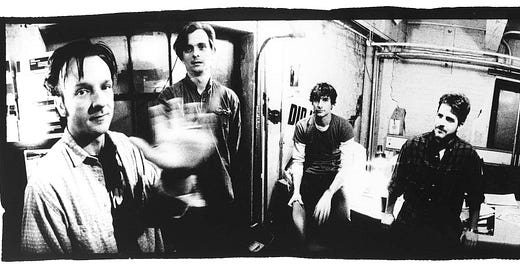



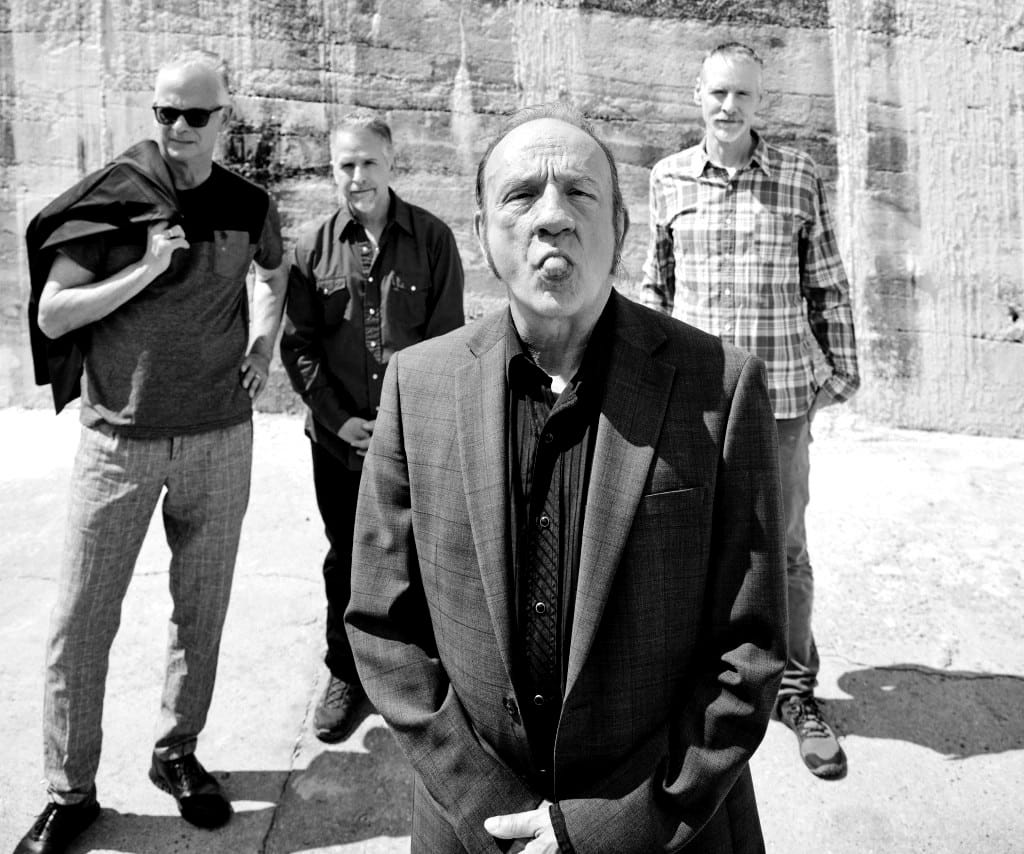
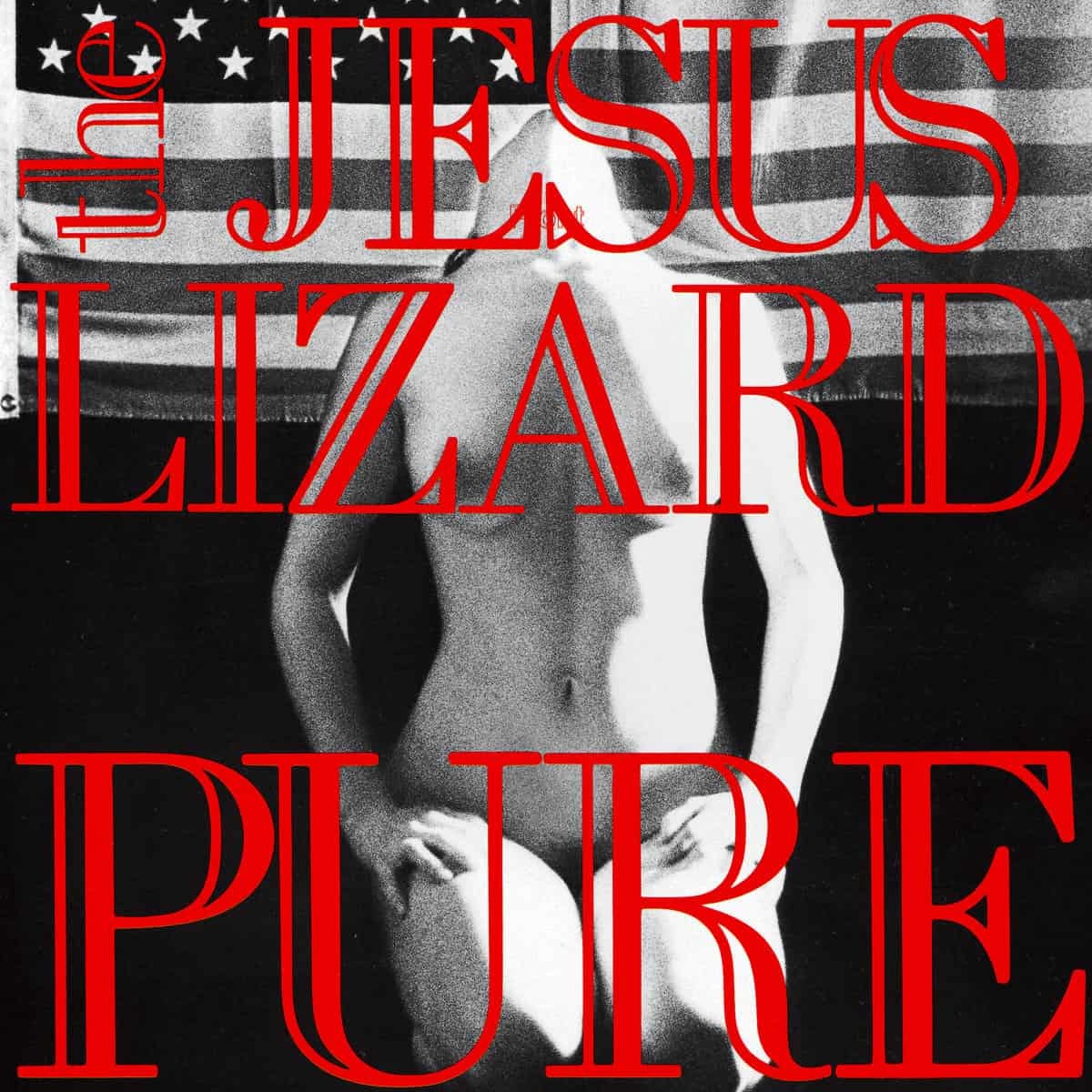
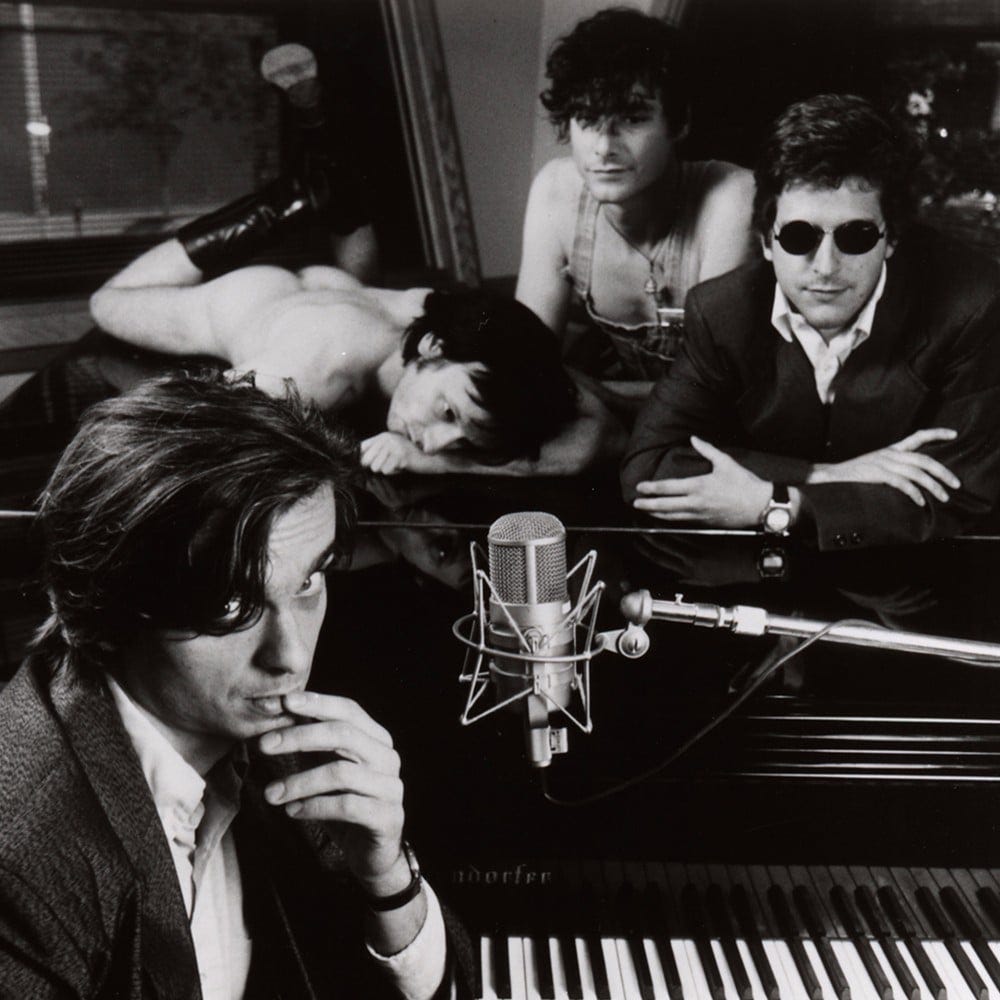


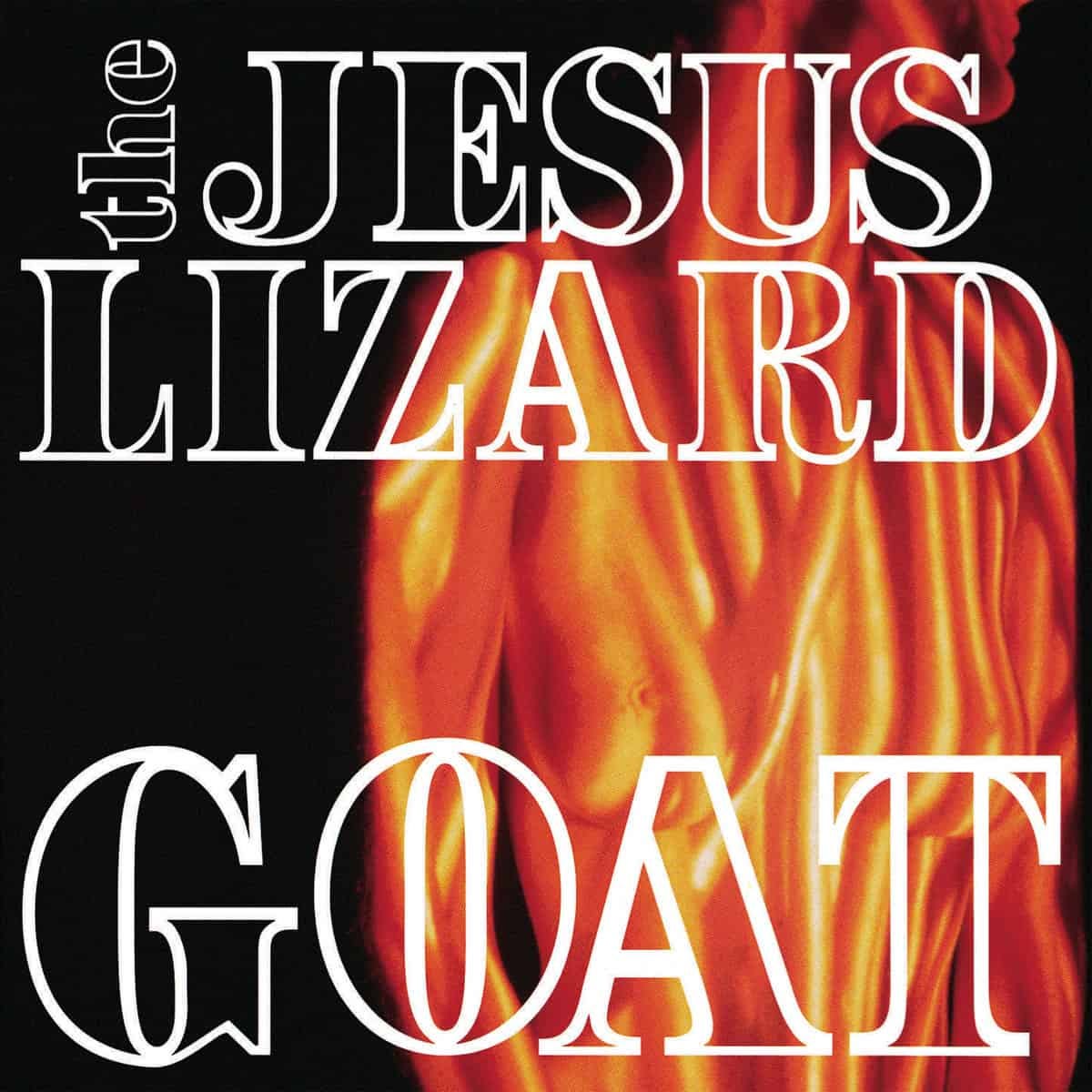



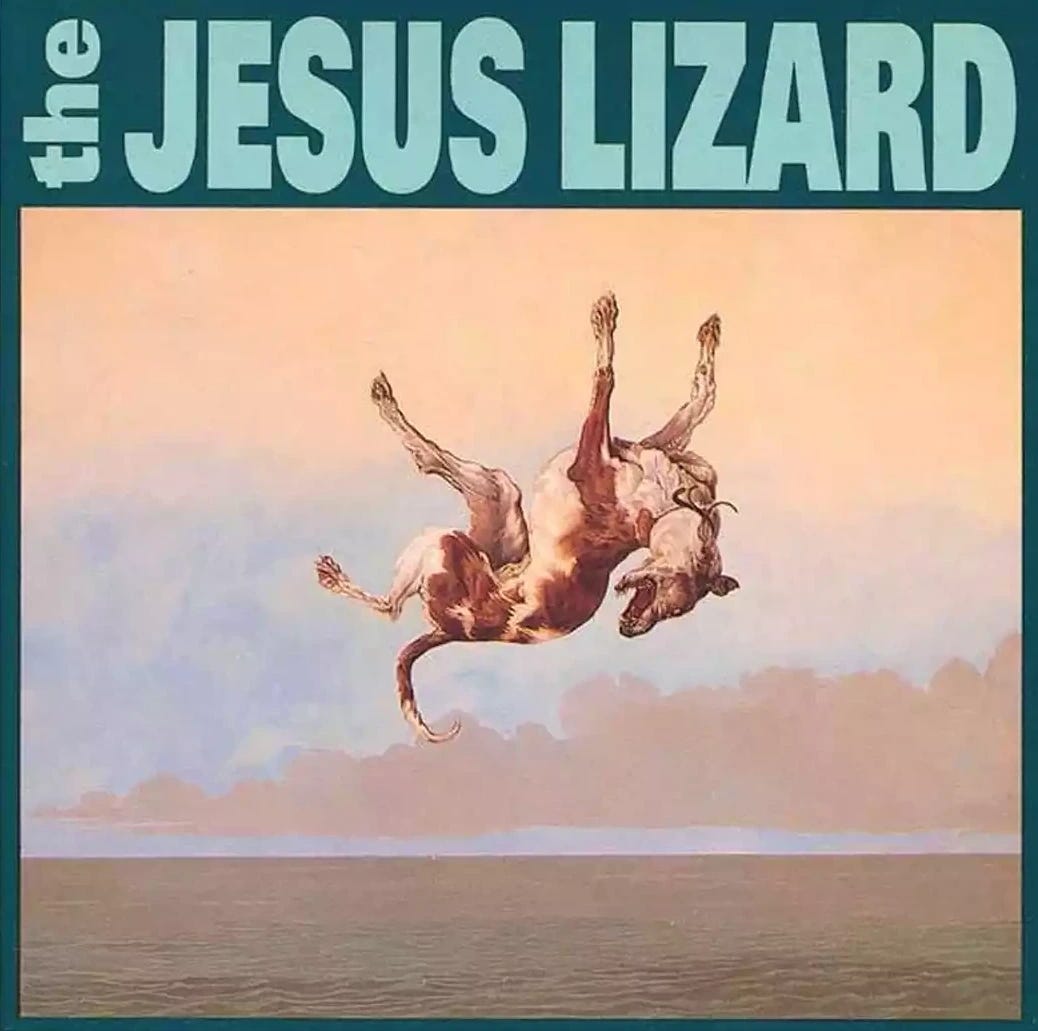

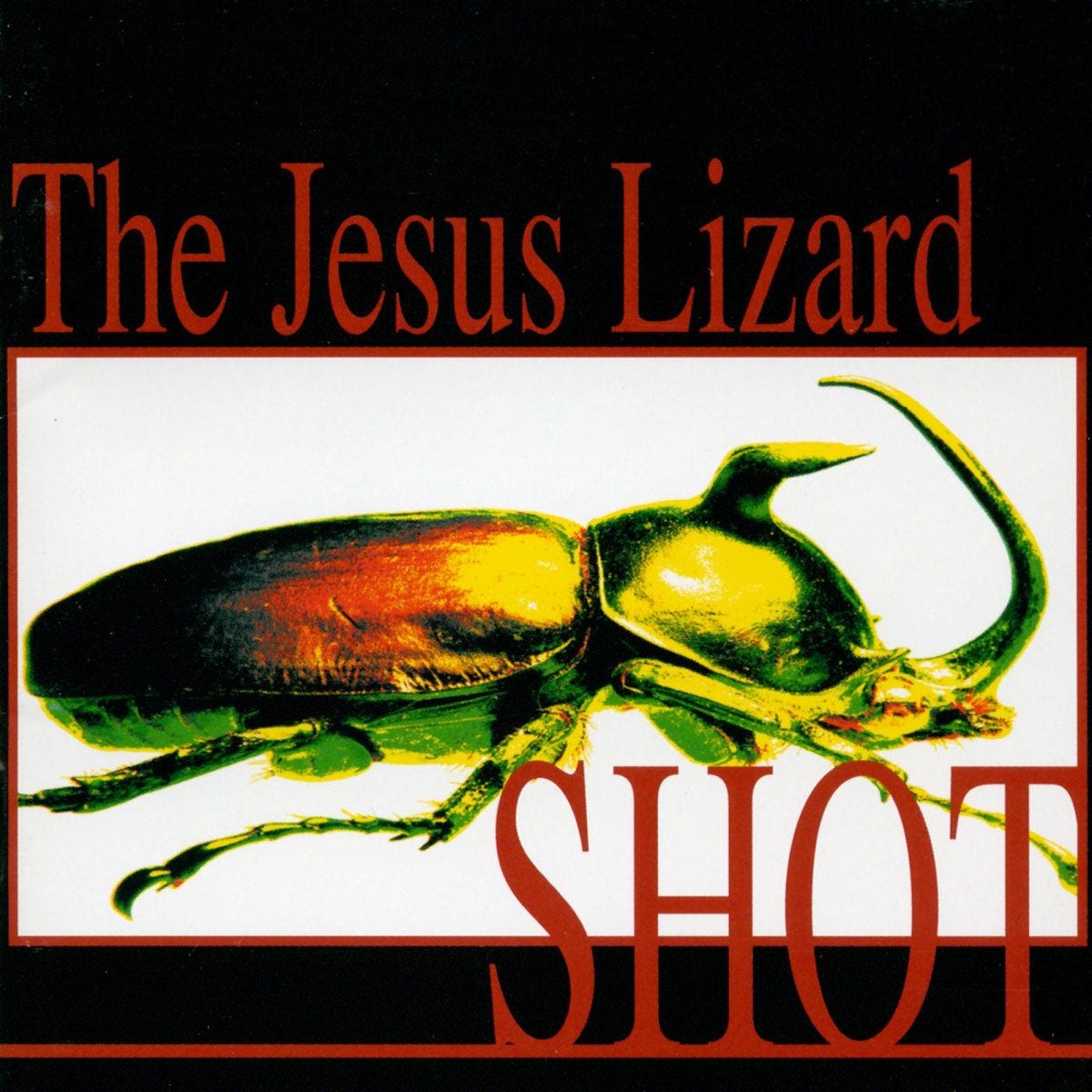
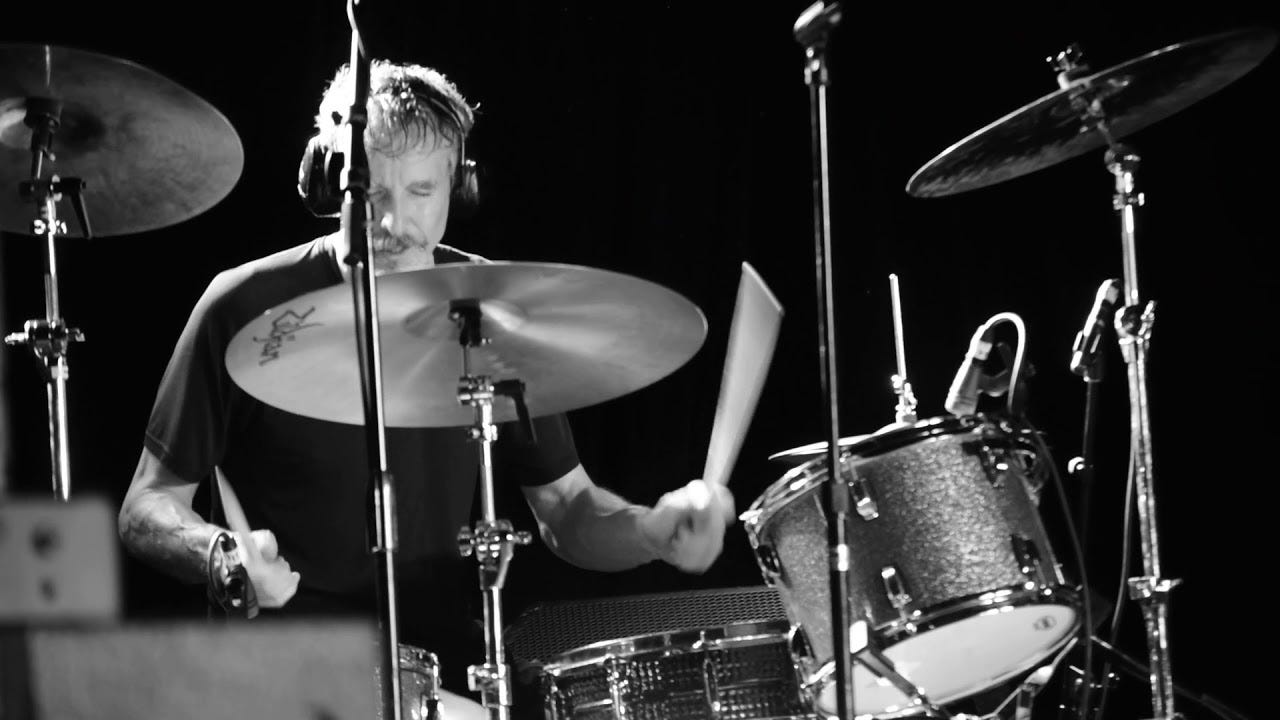
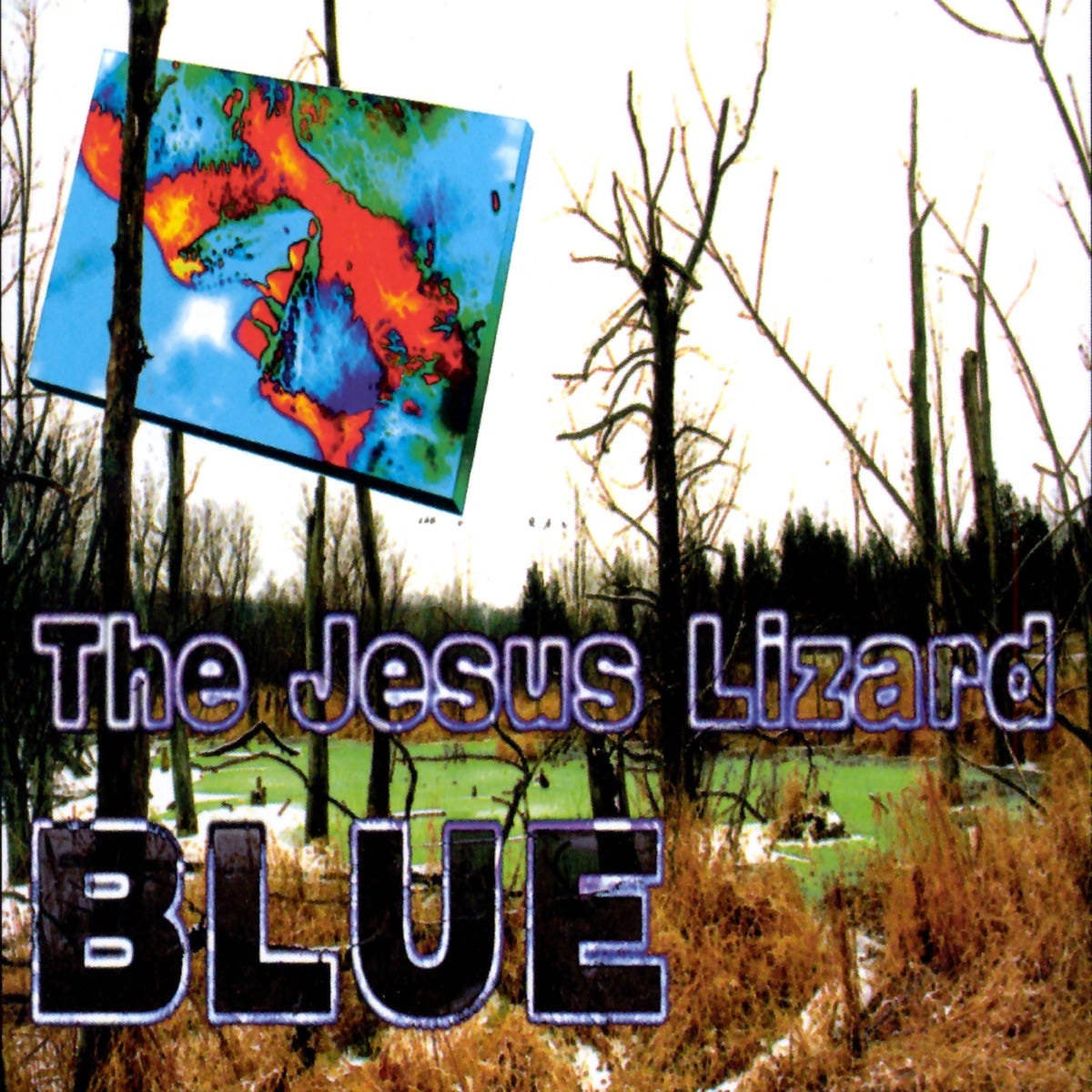
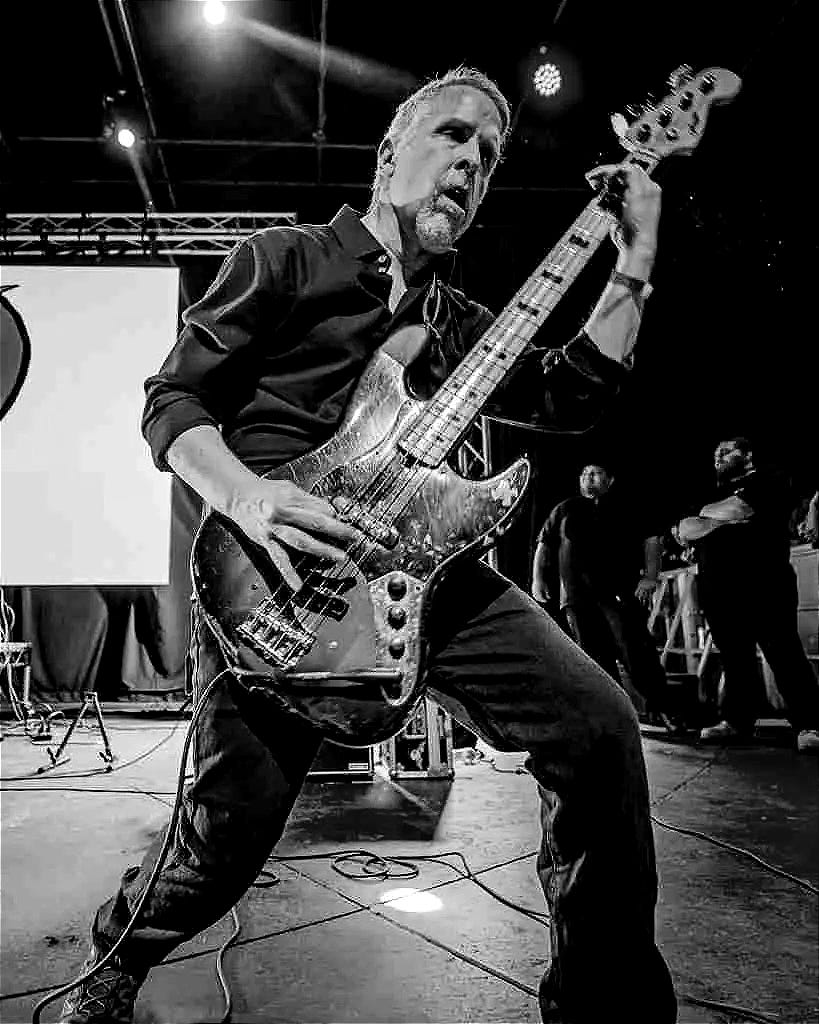
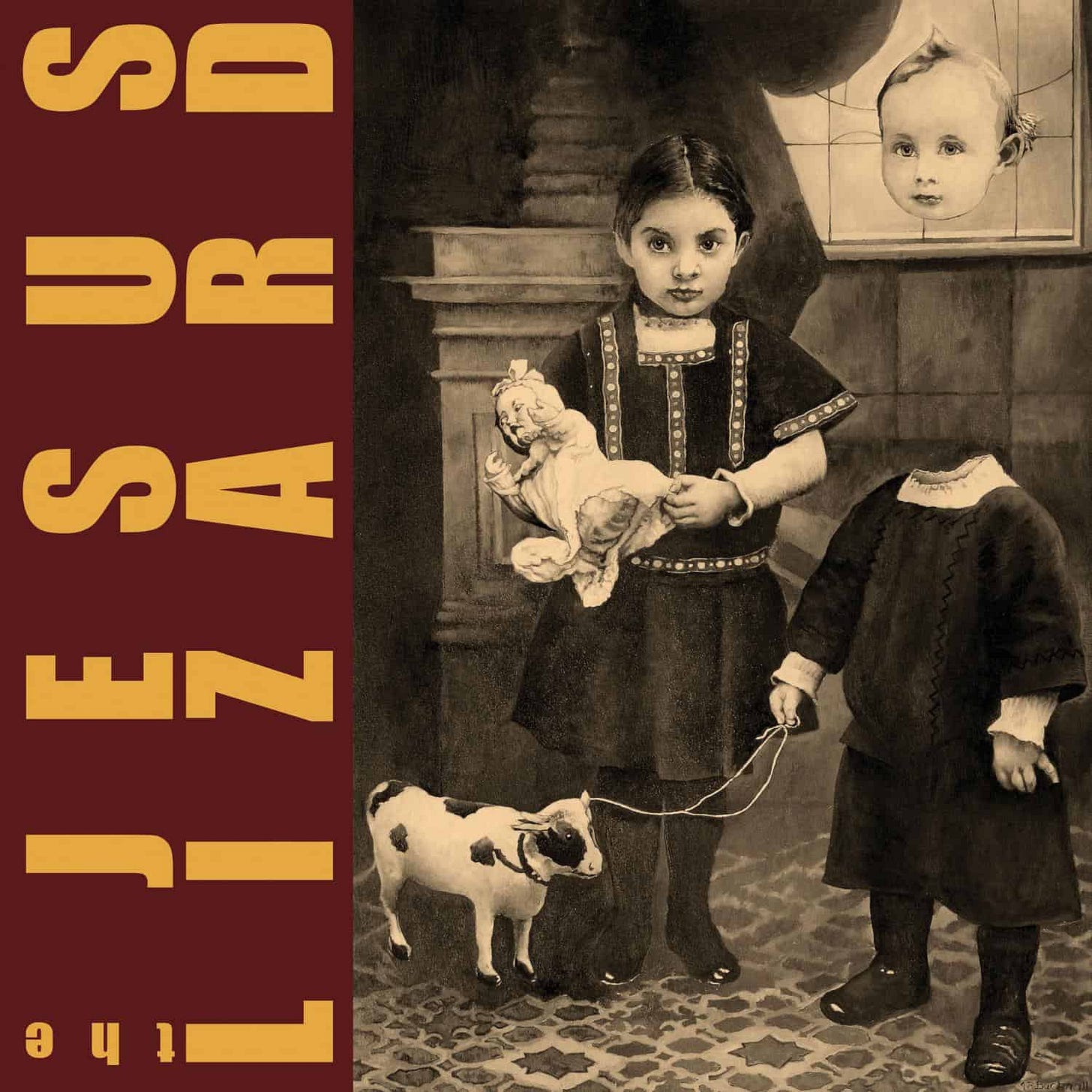


Saw them last week in Belfast. 5 seconds into opener 'Seasick', Yow's dangling upside from a pillar, held aloft by the crowd, screaming every word. Didn't stop for nearly 2 hours.
Furious, deranged & utterly joyous.
I share your excitement about the upcoming shows - I'm going to Bristol and Brighton. I almost booked a ticket to the States when it was first announced they were playing live last year until my wife suggested I calm dowm, look down the list and check out the UK gigs. I went to both the Garage and Astoria shows you mention back in your writing in 1993. Incredible gigs. Their reunion show at the Forum in 2009 managed to be just as visceral and arguably, they seemed musically even tighter (better live sound production by then?). They are older now and there is no way Yow can start his gigs at the pace he used to but by all accounts they sound amazing and unhinged at their latest shows. I hope they can weather six nights in a row (gruelling for any band) and stay away from the flu that seems to be taking everyone down at the moment. I hope you enjoy the London gig!